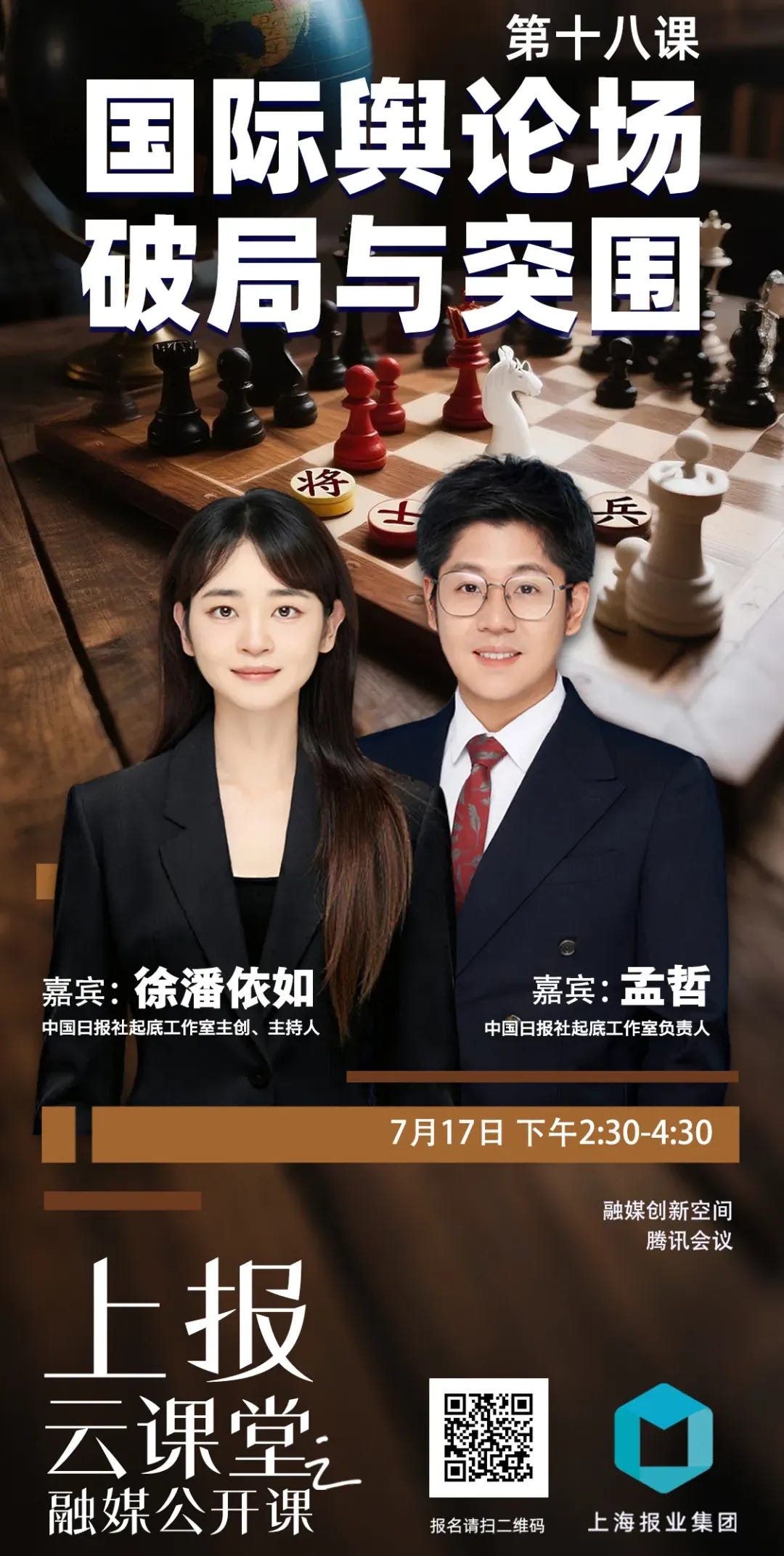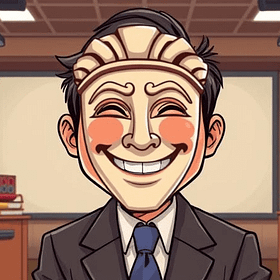How China uses "media studios" to hide in plain sight.
At 2:30pm on a recent Thursday, on the 43rd floor of the headquarters of the Shanghai United Media Group, some of China’s propagandists gathered to slap backs, and swap tips on how they “effectively guide public opinion” internationally.
Together, these content creators have amassed hundreds of millions of views, are regularly pushed by CPC government officials, and have won multiple national awards.
The afternoon’s keynote speech was delivered by the duo behind China Daily’s Media Unlocked studio. Their theme: "Breaking the Siege and Breaking Through the International Public Opinion Field" — that’s foreign influence, to you and I.
The warm-up act came from the creators behind Shanghai Daily’s own “Andy Studio”, fronted by Andy Boreham, an ex-New Zealand drag artist / political activist now turned Chinese Communist Party cheerleader. The only foreign man Twitter ever saw fit to label as “Chinese state affiliated media”.
Welcome then, to the sharp end of the Chinese state’s new media delivery method: the “studio system”.
The Party refers to these outfits as its “Light Calvary”, small units designed to ride in, and steer international conversations in exactly the way Beijing wants. When it works, their content is amplified by the full weight of the state, posts are re-shared by government channels in prearranged pushes, comments flooded by an army of both real Party members and bots hired via third-party PR firms.
However, for as keen as these content creators are to give lectures at industry events, host HQ tours for peers, co-ordinate narrative positions on WeChat, or set homework for university students on picking apart Western narratives, the studios are much more coy about their Party roots when interacting with audiences abroad. Often, they go to great lengths to hide their employers, funding, or censorship. Many maintain they are “independent”, or obfuscate their origins. I can show otherwise.
Over the next weeks, using public sources, we’ll look at how studios operate, how they came to be, and why.
I’ll take a close look at a few individual studios.
I’ll show the difference between what they say internationally, compared to internally, where they nakedly spell out their agenda across industry articles, lectures, and academic journals.
I’ll show how some may have broken US laws, or rig social media platforms.
And I’ll show how some are right here on Substack.
How do I know all this? I was one of the prototypes.
I. What is a Media Studio? (Free)
"No speed. No ability. Can't tell stories". Why China is turning to 'media studios' to revive its propaganda
Read Chinese news in recent years, especially on social media, and no doubt you will have seen a bright-eyed journalist tell you about the “real China”. Probably a vlog. Or an animation. Or a Substack.
II. How state media targets Substack. (Now free)
How Chinese state media are quietly targeting "elites" via Substack
This is part of a wider look at “Media Studios”. How Chinese state media are attempting to influence international audiences via supposedly arms-length media professionals. This week: Substack.
III.
IV.
V.





So many of these “studios” are just another example of how corruption can take place, albeit at a small scale, even at state media, and fairly in the open too.
A studio launches, gets funding from the government, and starts making content — but they soon realise that throwing together videos and slapping them on social media doesn’t work.
“How come other studios create similar content and get millions of views? If we don’t do the same, we’ll lose the contract for next year.”
So, what do they do? They post videos/articles across different platforms — TikTok, X, YouTube… but also one or two platforms that allow the easy purchase of bots/fake views (I know that Facebook is a favourite for this).
That’s why you’ll see some content seemingly doing amazing on one single platform (like 10,000 likes and 100,000 views, but rarely any comments), but get very little organic interaction anywhere else.
Work reports get written up like this: this content was posted to Facebook, X, YouTube, TikTok, etc., getting more than 10,000 likes and 100,000 views across all platforms. Technically it is “true”, but what isn’t mentioned is that 99% of those views/impressions were paid for.
It might cost like $50 to get those views, but it means that the work reports look decent enough to keep contracts going, effectively continuing to funnel massive amounts of money into “international broadcasting” efforts that have very little to no impact.
And that’s a problem for Beijing, because based on all of the work reports being submitted, the central government thinks it has established a strong international voice, when in reality, it is just fuelling a new form of waste and corruption.
This is why it is hard to believe in any figures/statistics that come out of China. Because always, at every level of governance, there is some form of this behaviour taking place — fudging numbers to avoid criticism, lumping different sets of statistics together to hide failings, and endless work reports that take almost as long to write as creating the content itself.
It is a grift. An unintentionally state-funded grift. And people engaging in it are nothing more than opportunistic, performative “patriots”, who have no qualms about wasting Chinese taxpayers’ hard-earned yuan to maintain clout and “relevance”, even if it is paid for via promotion/bots.